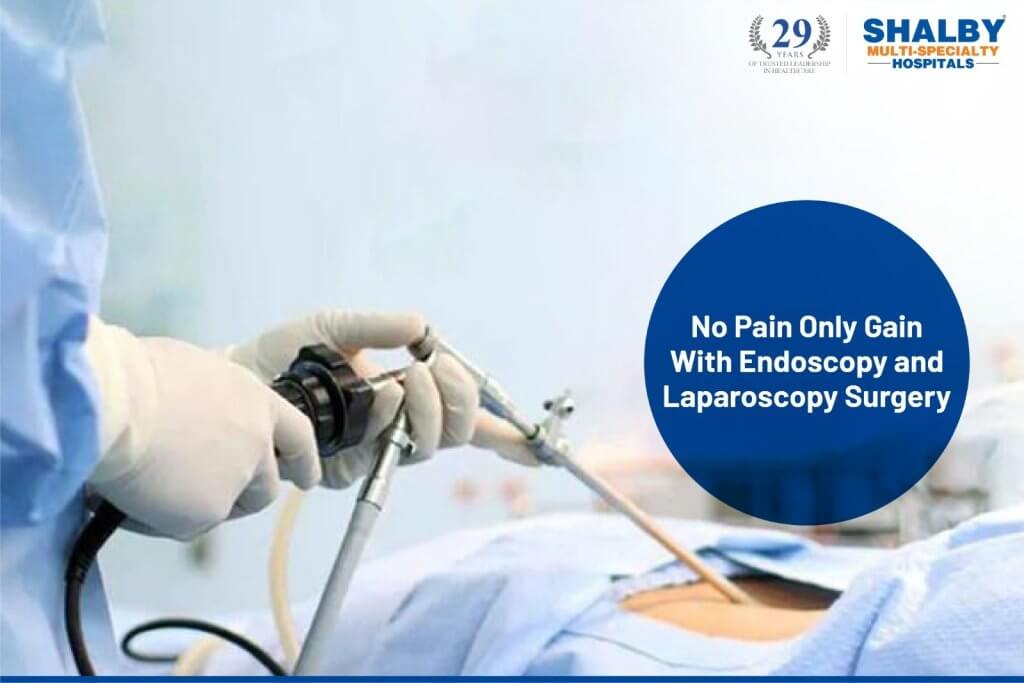
The advancement in medical science has changed the face of healthcare services. With diagnostic procedures and surgeries becoming minimally invasive and painless, patients have finally breathed a sigh of relief. With such medical innovations, patients no longer hesitate to visit doctors for their physical discomforts and take timely treatment to treat their disease.
Also, these treatments are now available at affordable costs and are more accessible, hence making the healthcare industry more patient-focused than ever before.
In this blog, let’s discuss about the endoscopic surgery and the laparoscopic surgery that play a vital role in determining the issues of your digestive tract and abdomen and treats them effectively with less pain, reduced risk of infection, no muscle cutting, less scarring and better cosmetic result.
Both of these endoscopy and laparoscopy surgery are performed at Shalby Hospital Jabalpur and Mohali. These surgeries derive their name from the instrument that they use i.e. an endoscope and a laparoscope.
Endoscopy is performed to diagnose conditions of your digestive system like heartburn, vomiting, diarrhea, inflammation, gastrointestinal bleeding, abdominal pain, nausea, difficulty in swallowing, etc.
To detect the underlying causes behind these symptoms, a long flexible tube with a light and camera attached to its end is either passed through the mouth (to detect the problems of upper digestive tract) or through the rectum (to detect the problems of lower digestive tract).
There are types of endoscopy useful for investigating the issues of various parts of the body like:
· Anoscopy for anus or rectum
· Arthroscopy for joints
· Bronchoscopy for windpipe and lungs
· Colonoscopy for the entire length of the colon and large intestine
· Colposcopy for vagina and cervix
· Cytoscopy for inside of the bladder
· Esophagoscopy for esophagus
· Gastroscopy for stomach and duodenum, which is the beginning of the small intestine
· Laryngoscopy for larynx, or voice box
· Neuroendoscopy for brain
· Proctoscopy for rectum and sigmoid colon, which is the bottom part of the colon
· Sigmoidoscopy for the sigmoid colon
· Thoracoscopy for pleura, which are the 2 membranes covering the lungs and lining the chest cavity, and structures covering the heart
One may or may not need anesthesia depending on the type of the endoscopic procedure. Also, overnight hospitalization is generally not required in most of the cases of endoscopic surgery. However, it is recommended to take full day rest to recover from the side-effects of endoscopy like sore throat, dryness in throat, bloating and gas.
To avoid the need for open surgery, laparoscopy is performed to examine abdominal problems and treat them effectively. Laparoscopy includes a laparoscope, a narrow long tool with a camera and light attached to its end.
Laparoscope is inserted into the body through multiple cuts which are not more than an inch long to get a clear vision of the abdomen and its different parts. Laparoscopy surgery is also known as minimally invasive surgery or keyhole surgery.
Generally, abdominal problems can be detected through ultrasound, CT scan and MRI scan. But when these tests fail to provide enough insight into the abdominal issues, laparoscopy proves to be an ideal option for correct diagnosis.
Shalby Hospital Mohali has an expert laparoscopic surgeon who carries out laparoscopic surgery for appendectomies (removal of the appendix), hysterectomies (removal of the uterus), and prostatectomies (removal of prostate tissue). Just like endoscopic surgery, after laparoscopic surgery, there is less loss of blood and fast recovery.
A laparoscopy surgeon in India may recommend a laparoscopy to examine the following organs:
· Appendix
· Gallbladder
· Liver
· Pancreas
· Small Intestine and Large Intestine
· Spleen
· Stomach
· Pelvic or Reproductive Organs
Along with diagnosing the abdominal problem, laparoscopy is also used the removal of fibroids, uterus, ovarian cysts, lymph nodes, or an ectopic pregnancy. It can also detect cancer of ovary, uterus and cervix.
Also, it is used for the treatment of endometriosis, urinary incontinence, infertility, pelvic inflammatory disease, pelvic organ prolapse, chronic pelvic pain, etc.
Hence, the medical innovations have taken a huge leap with these two minimally invasive surgeries in treating disorders with minimum pain in less time. No wonder, it has elevated the level of patient satisfaction and their trust in modern medical science.